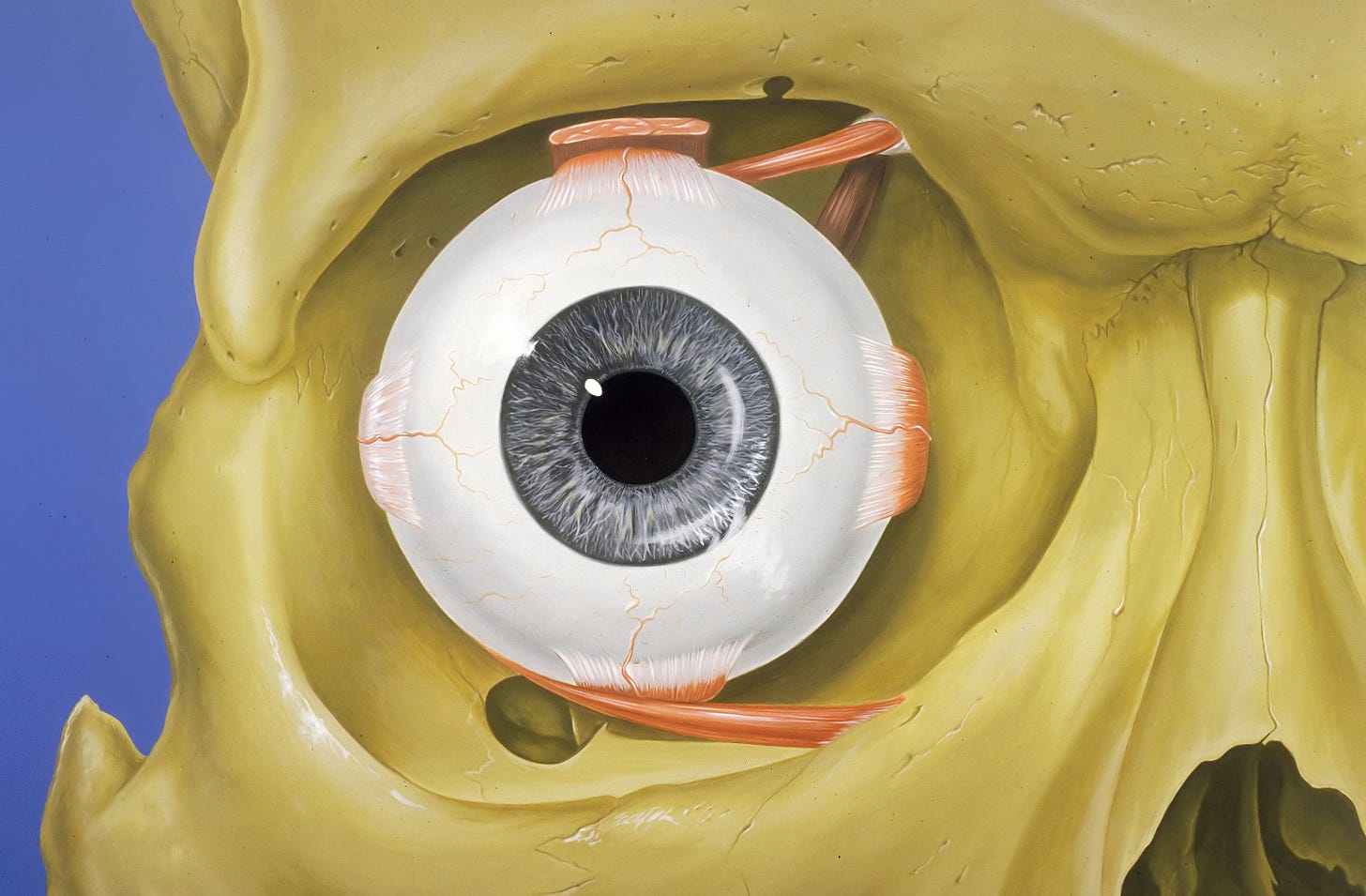The Veil of Perception for Direct Realists
Putting the stupidest argument against indirect realism to bed

One common argument against indirect realism is that it invokes a sort of veil of perception: you only ever perceive the world through some perceptual intermediary. The problem is then supposed to be that it’s hard to justify belief in an external world, since you are never “in contact” with it—there is no way of knowing whether your experiences are caused by something unrelated to their content. This objection has always puzzled me as I simply don’t see how this is any more of a problem for indirect realism than for direct realism. For my purposes here I will define direct realism as the view that the objects of perception are ordinary objects in the external world. Indirect realism is then the negation of this, combined with realism about the external world.
Now, I don’t think that this is taken to be a particularly serious critique, and it’s mostly something you’ll hear from a history of philosophy teacher, when they explain how Locke’s indirect realism is SO STUPID, and Berkely took it to its ONLY logical conclusion. Still, it’s the sort of thing that many direct realists will offhandedly mention as a strike against indirect realism. But I don’t even think it’s the tiniest reason to favor direct realism, so it’s worth trying to put it down.
To see why this is just as big a problem for direct realism, we can start by considering hallucination cases. By a hallucination I mean a perceptual experience that is subjectively indistinguishable from veridical perception, but which occurs without a corresponding external object or stimulus in the environment. For example, if you hallucinate a smurf in front of you, then that will mean that your experience is not a perception of an actual smurf. Crucially, from your point of view, this experience will be completely indistinguishable from an actual perception of a smurf; if you know that you are one of two people—one actually seeing a smurf, and one simply hallucinating one—you would have no way of telling who you are.
What I’ll be arguing here won’t rely on hallucinations ever actually occurring. Rather they simply need to be epistemically possible. I do think that they are really possible, though. For example, you can imagine stimulating a brain in the exact way that it would be stimulated if it was actually seeing a smurf in front of it, but without the brain actually being connected to eyes. Since perceptual experiences presumably supervene on brain-states, this would lead to a hallucination.
If this is granted, then the veil of perception seems just as big a problem for a direct realist as for an indirect realist. Remember what the problem with the veil of perception was supposed to be: since your perception of the external world is mediated by a “veil,” there is no way of knowing whether there is an external world, or whether your experiences are caused by something completely unrelated. However, the direct realist who admits the possibility of hallucinations will be in exactly the same position. Sure, if your perceptions are of external objects, then they will be of external objects (obviously). But there is no way of telling whether what you are having are perceptions of external objects, or hallucinations, since the two are subjectively indistinguishable. It might just be that all my perceptual experiences are hallucinations caused by an evil demon, or being a brain in a vat.
“Hold on,” the direct realist might say “I might not be able to distinguish veridical perception of the external world from a hallucination thereof, but I am actually perceiving the external world, and so I actually have knowledge of it.” I think an indirect realist can say the analogous thing: my experiences are actually caused by the relevant objects. Though if we grant that the direct realist has a special kind of knowledge, I just don’t care about it, and you shouldn’t either. Let us consider an analogy. A painting that looks exactly like “Nateffekt” by Anders Zorn is placed in front of you:
You are now asked how you can know whether the original painting exists, or has been destroyed. Triumphantly you explain “this is actually the original painting, and since I’m seeing it, I’m sure that it exists.” Likewise if you’re asked about certain properties of the original painting, like it’s location, smell, etc., you simply defer to the painting in front of you. Now the possibility of it being a replica is raised to you. Rather than pointing to things like how accurate it is, the depth of the colors, the way the paint is raised in a way it wouldn’t be on a print, etc., you simply insist that you’re actually looking at the original painting, and so you actually know that the actual painting exists.
This response is obviously bullshit. Stomping your feet and insisting that you’re actually seeing the real painting isn’t gonna settle anything. Taking it back to the direct/indirect realist question, insisting that you’re actually perceiving the external world isn’t gonna settle whether there is an external world, or what it’s like, since you might just as well be hallucinating. And again, the indirect realist can equally stomp their feet and say that their perception is actually caused by the object its representing, and this will be about as convincing as what the direct realist says.
To know whether you’re hallucinating, then, you’ll have to give a substantive response to the skeptic: perhaps you’re presumptively justified in believing in an external world because it seems like there is one, perhaps an external world is the best explanation of our experiences, or perhaps you can just Moorean shift (no you can’t). Whatever you say that is actually substantive, however, will be just as available to an indirect realist. This is because both our experiences and the causal structure of the world are the same for the direct and indirect realist. The only difference between the two is whether our experience during veridical perception is of an external object or not—not whether your perception is veridical. What matters are your reasons and these are exhausted by your experiences (or something like causal relations, faculties, or methods if you’re a dirty externalist), so they’re the same under the two views.
There are of course some things that the direct realist will be in a worse position to know, like the actual taste, smell, color, etc. of objects—what we might call their secondary qualities. But these the indirect realist should just deny are real things in the objects themselves, something I argue in my post about shit (yes, really). And knowledge about the existence of the external world, as well as its primary qualities are equally accessible to both kinds of realism.
Still, it might just feel like the indirect realist is worse off. I mean, you could in vary the external world while holding perceptual experiences fixed. The thing is, the same is true of direct realism, due to hallucinations, and though it might not feel like it, our experiences are no more independent of the external world given indirect realism than they are given direct realism. Like, both the direct and the indirect realist will presumably think that mental states (including perceptual experiences) supervene on brain states, and that brain states are caused in the same way through external input. So there just isn’t a difference in how “safe” your perceptions are between the two. The difference, as I see it, is just that it feels more safe to say that you’re directly perceiving the world. But this feeling doesn’t change the fact that neither view is in a better position to avoid skepticism than the other.






“However, the direct realist who admits the possibility of hallucinations will be in exactly the same position. Sure, if your perceptions are of external objects, then they will be of external objects (obviously). But there is no way of telling whether what you are having are perceptions of external objects, or hallucinations, since the two are subjectively indistinguishable.”
This is equating visual data with experience when the two aren’t necessarily the same. For example, I could be looking at a stick in water that looks bent, but which I know isn’t bent and only appears that way because it’s in water. Someone else could look at that same stick and believe they are looking at a bent stick (wrongly) and the direct realist could just say we are both looking at a straight stick that only appears bent, whereas the indirect realist couldn’t make that same claim.